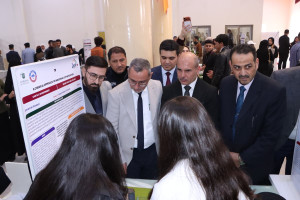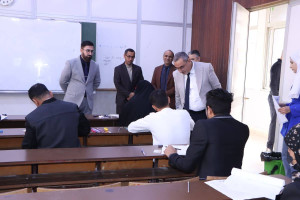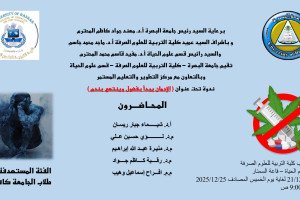
The College of Education for Pure Sciences, Department of Mathematics, discussed a doctoral thesis on estimation and prediction in the repeated measurements model
The thesis presented by the researcher (Haider Abboud Kouri) included
A study of estimation and prediction in a repeated measures model. This work consists of six aspects: the first aspect of the model is formulated with its assumptions and the study of estimation of model parameters and mean squared error in both conditional and unconditional cases.
In the second aspect, we obtained the expected mean square of the set of units and the mean square error of the expected depending on the table of analysis of variance, estimation of the maximum weighted, estimation of the restricted maximum weight, estimation of the modified maximum weight, the estimation of the initial non-informational Bayesian probability density function and the Bayesian actual estimate. We obtained 20 categories for the expected mean square ratio, which were categorized into five groups, four of which are unbiased and one is biased.
In the third aspect, we study the unconditional properties of the repeated measures model for the four unbiased aggregates.
In the fourth aspect, we study the conditional characteristics of the repeated measures model for the four unbiased aggregates.
In the fifth aspect, we studied the prediction of the repeated measures model and we got the linear prediction of the repeated measures model.
Finally, we took the data set from an experiment conducted in the field of medicinal plants, College of Agriculture, University of Basra during the period from September 2018 to March 2020 to investigate the effect of three factors: soil type (silty and sandy), soil contaminated with crude oil at four concentrations (0, 20, 40, 60) and foliar spraying with a concentration of glutathione in three concentrations (0, 100, 200) at the height of Jerusalem thistle and thistle plants, where we studied the Jerusalem thistle plant in the conditional condition and concluded that the height of the plant increases in the alluvial soil whenever the concentration of oil in the soil decreases and increases glutathione concentration. And we studied the Levantine thistle plant in the unconditional condition, and we also found that the height of the plant increases in alluvial soil as the concentration of oil in the soil decreases and the concentration of glutathione increases. We also concluded that predicting the unconditional is better than predicting the conditional. Where we relied on Excel to build the analysis of variance table, and we relied on the SPSS V.24 program in testing the problem of multilinearity, autocorrelation, heterogeneity and sphericality test.








